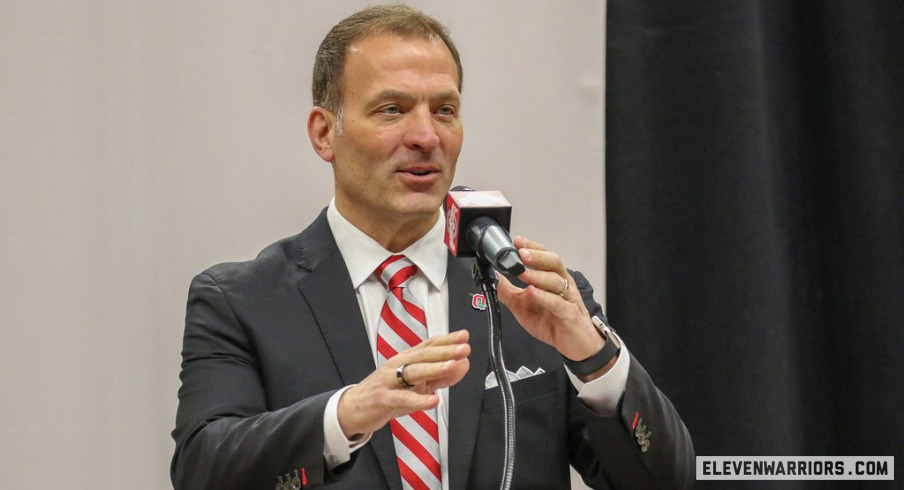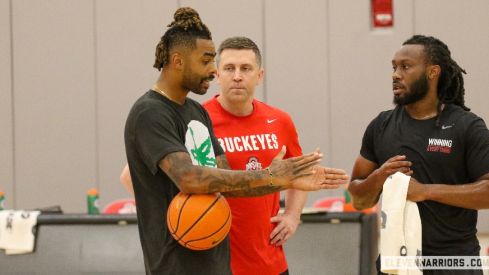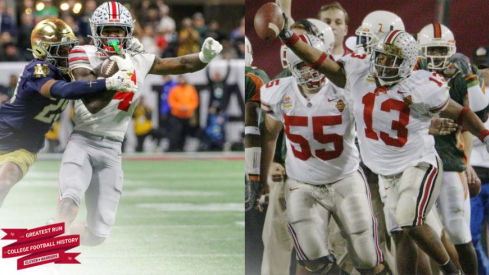A single word can describe a lot of recent changes to the strategy surrounding multitudes of sports in recent times (and perhaps drum up some debate among sports fans): Analytics.
Data and the conclusions drawn from it have changed the look and feel of the biggest sports in the American popular conscience. Just look at the prevalence of 3-point shots on the basketball floor or the reliance on relief pitchers on the baseball diamond for evidence. Of course, it goes well beyond on-field strategies; analytics can also inform teams on broader-scope elements of their organization like scheduling, roster construction and so on.
That prompted the creation of Ohio State’s newly formed Center for Sports Intelligence and Strategy as the Buckeyes seek to stay on the cutting edge in each of their 36 varsity sports.
“We think it's just a groundbreaking resource that'll have data,” Ohio State athletic director Ross Bjork said on Thursday. “It'll have sports science. It'll have sports performance. It'll have a lot of the elements around the circle of care that we use for our student-athletes. So we think it's an innovative approach to adapting to this new landscape.”
One thing Bjork clarified on Thursday is that the “Center” for Sports Intelligence and Strategy will not be a center in the sense of an actual location, but rather more of an epicenter of athletics department administrators to oversee data-driven projects that will aid the efforts of all Buckeye sports.
Deputy athletics director Shaun Richard will oversee the unit, joined by senior associate AD for sport administration and strategy Matt Bartlebaugh and associate AD for student-athlete development and sport administration Makena Alexakos.
“(Center) is kind of an umbrella description, so it's not a physical space per se,” Bjork said. “But we announced a center for sports intelligence and strategy. And it's really a centralized resource. Many people have raced out and hired maybe what people call general managers. So we wanted to take a different approach and say, ‘How do we centralize resources for those coaches that may not have a big staff, but can we provide resources within our department?’”
That trio of leaders will manage data projects to provide direction on specific questions surrounding various sports programs.
“Who should we schedule that will help you get in postseason,” Bjork said. “It'll be things like, OK, the fact that baseball has more money – (I) keep using baseball, it's an easy example because of the scholarship restriction (that) was antiquated for so long – OK, do you wanna go more out of state? And here's talent acquisition, what out of state looks like, or do you wanna go more in state? Because Ohio has pretty good baseball.”
Bjork referenced the existing use of analytics in roster-building and NIL spending for Ohio State football and its general manager, Mark Pantoni. In establishing their new center – physical location or otherwise – the Buckeyes are not only boosting those efforts for the football team but providing the same resources across their athletics department.
“Analytics on how to spend scholarships, analytics on how to spend the revenue share, the NIL payments,” Bjork said. “We have a great sport performance unit here. How do we take that and give all that resource to all of our sports? So just a lot of consistency across the board, how we do budgeting, how we do scheduling, how we do coaches' contracts. All of that can now sit really in a central center, like we talked about, that I think just gives our coaches a cutting edge performance initiative. That's the whole goal behind it.”


